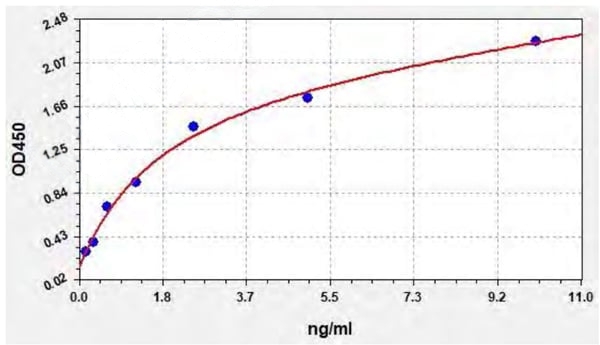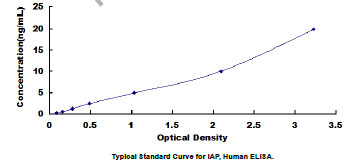Mouse anti-Human PINK1 Monoclonal Antibody | anti-PINK1 antibody
PINK1 Antibody
IF~~1:25
WB~~1:100~500
IHC (Immunohistchemistry)
(PINK1 Monoclonal Antibody immunohistochemistry analysis in formalin fixed and paraffin embedded human kidney tissue followed by peroxidase conjugation of the secondary antibody and DAB staining. This data demonstrates the use of the PINK1 Monoclonal Antibody for immunohistochemistry. Clinical relevance has not been evaluated.)
WB (Western Blot)
(Western blot analysis of PINK (arrow) using mouse monoclonal PINK antibody. 293 cell lysates (2 ug/lane) either nontransfected (Lane 1) or transiently transfected with the PINK gene (Lane 2) (Origene Technologies))
WB (Western Blot)
(Western blot analysis of lysates from A431 cell line, mouse brain tissue lysate(from left to right), using Pink1 Antibody(115-213). AAA28638 was diluted at 1:1000 at each lane. A goat anti-rabbit IgG H&L(HRP) at 1:10000 dilution was used as the secondary antibody. Lysates at 20ug per lane.)
IF (Immunofluorescence)
(Fluorescent image of PC12 cells stained with Pink1(115-213) Antibody. AAA28638 was diluted at 1:25 dilution. An Alexa Fluor 488-conjugated goat anti-mouse lgG at 1:400 dilution was used as the secondary antibody (green). Cytoplasmic actin was counterstained with Alexa Fluor 555 conjugated with Phalloidin (red).)
IHC (Immunohistochemistry)
(Immunohistochemical analysis of paraffin-embedded H. heart section using Pink1(115-213). AAA28638 was diluted at 1:25 dilution. A undiluted biotinylated goat polyvalent antibody was used as the secondary, followed by DAB staining.)
IHC (Immunohistochemistry)
(Immunohistochemical analysis of paraffin-embedded H. stomach section using Pink1(115-213). AAA28638 was diluted at 1:25 dilution. A undiluted biotinylated goat polyvalent antibody was used as the secondary, followed by DAB staining.)
Assessing the prevalence of PINK1 genetic variants in South African patients diagnosed with early- and late-onset Parkinson's disease. Keyser RJ, et al. Biochem Biophys Res Commun, 2010 Jul 16. PMID 20558144.
Progression of subtle motor signs in PINK1 mutation carriers with mild dopaminergic deficit. Eggers C, et al. Neurology, 2010 Jun 1. PMID 20513816.
Structural imaging in the presymptomatic stage of genetically determined parkinsonism. Reetz K, et al. Neurobiol Dis, 2010 Sep. PMID 20483373.
Clinical and demographic characteristics of PINK1 mutation carriers--a meta-analysis. Kasten M, et al. Mov Disord, 2010 May 15. PMID 20461815.
NCBI and Uniprot Product Information
Similar Products
Product Notes
The PINK1 pink1 (Catalog #AAA28638) is an Antibody produced from Mouse and is intended for research purposes only. The product is available for immediate purchase. The PINK1 Antibody reacts with Human and may cross-react with other species as described in the data sheet. AAA Biotech's PINK1 can be used in a range of immunoassay formats including, but not limited to, ELISA (EIA), Immunohistochemistry (IHC), Immunofluorescence (IF), Western Blot (WB). IHC~~1:50~100 IF~~1:25 WB~~1:100~500. Researchers should empirically determine the suitability of the PINK1 pink1 for an application not listed in the data sheet. Researchers commonly develop new applications and it is an integral, important part of the investigative research process. It is sometimes possible for the material contained within the vial of "PINK1, Monoclonal Antibody" to become dispersed throughout the inside of the vial, particularly around the seal of said vial, during shipment and storage. We always suggest centrifuging these vials to consolidate all of the liquid away from the lid and to the bottom of the vial prior to opening. Please be advised that certain products may require dry ice for shipping and that, if this is the case, an additional dry ice fee may also be required.Precautions
All products in the AAA Biotech catalog are strictly for research-use only, and are absolutely not suitable for use in any sort of medical, therapeutic, prophylactic, in-vivo, or diagnostic capacity. By purchasing a product from AAA Biotech, you are explicitly certifying that said products will be properly tested and used in line with industry standard. AAA Biotech and its authorized distribution partners reserve the right to refuse to fulfill any order if we have any indication that a purchaser may be intending to use a product outside of our accepted criteria.Disclaimer
Though we do strive to guarantee the information represented in this datasheet, AAA Biotech cannot be held responsible for any oversights or imprecisions. AAA Biotech reserves the right to adjust any aspect of this datasheet at any time and without notice. It is the responsibility of the customer to inform AAA Biotech of any product performance issues observed or experienced within 30 days of receipt of said product. To see additional details on this or any of our other policies, please see our Terms & Conditions page.Item has been added to Shopping Cart
If you are ready to order, navigate to Shopping Cart and get ready to checkout.
























